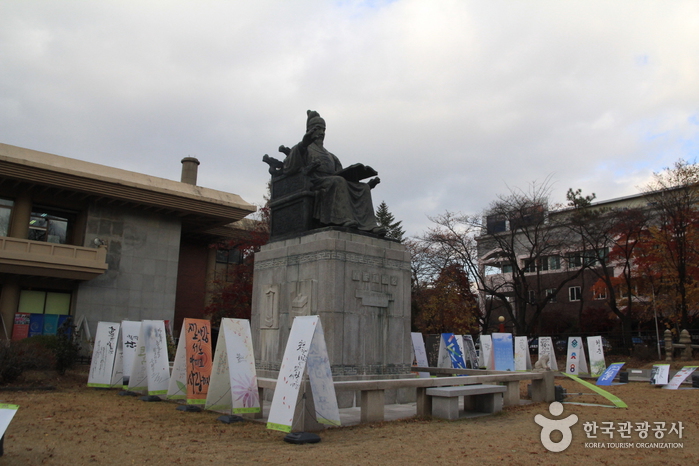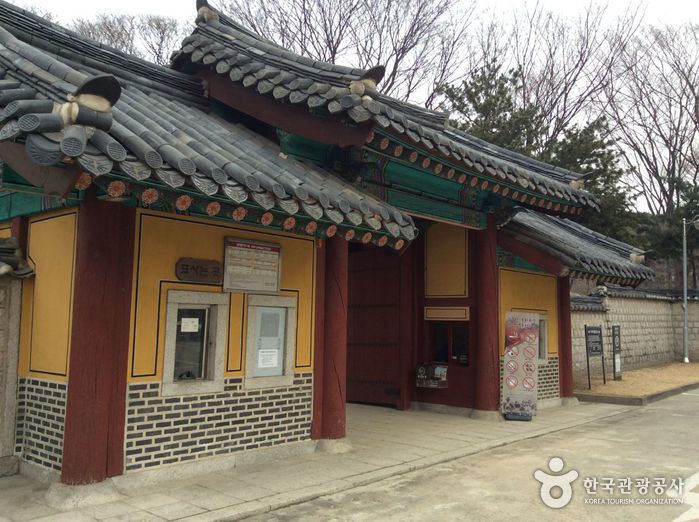Hangang Paradise (한강파라다이스)
6.1Km 2024-03-25
252 Yeouidong-ro, Yeongdeungpo-gu, Seoul
+82-2-447-3333
Hangang Paradise is a renowned Italian restaurant nestled in Yeouido Hangang Park. It offers a diverse menu featuring items such as steak, pizza, dongaseu (pork cutlet), and bulgogi deopbap (stir-fried bulgogi served with rice), with the tenderloin steak being the standout dish. Guests can savor their meals while enjoying the picturesque views of the Hangang River. Additionally, Hangang Paradise operates a quay for duck boats, adding to its allure as a favored destination for those visiting the Hangang River area.
E-Mart - Hawolgok Branch [Tax Refund Shop] (이마트 하월곡)
6.1Km 2024-04-22
167, Jongam-ro, Seongbuk-gu, Seoul
-
Sculp - Seogyo Branch [Tax Refund Shop] (스컬프 서교)
6.1Km 2024-04-23
16-16, Yanghwa-ro 8-gil, Mapo-gu, Seoul
-
King Sejong The Great Museum (세종대왕박물관)
6.1Km 2024-03-08
56, Hoegi-ro, Dongdaemun-gu, Seoul
+82-2-969-8851
King Sejong The Great Museum is a cultural complex located in the heart of Seoul, near Gwanghwamun Plaza.The Hangeul Room exhibits documents published during the reign of King Sejong, the Science Room displays Cheugugi and celestial planisphere, and the Korean Traditional Music Room showcases various traditional Korean musical instruments. The Biography Room features Portrait of King Sejong and paintings depicting scenes from his life. Outdoors, there are statues of King Sejong, the scahe sundial, the clepsydra, and Cheugugi.
Frientrip Co., Ltd. (주식회사 프렌트립)
6.1Km 2025-11-28
#G704, HEYGROUND, 115 Wangsimni-ro, Seongdong-gu, Seoul
Frientrip is a wellness-based medical tourism service that integrates travel with personalized health management. It partners with certified medical institutions and trusted wellness providers to offer a seamless journey that combines check-ups, beauty and healthcare programs, and recovery experiences. KareTrip enables customers to conveniently schedule medical services while enjoying travel, providing tailored itineraries and on-site support as a comprehensive end-to-end service.
Yeonghwiwon and Sunginwon Royal Tombs (서울 영휘원(순헌황귀비)과 숭인원(이진))
6.1Km 2021-03-12
90, Hongneung-ro, Dongdaemun-gu, Seoul
+82-2-962-0556
Yeonghwiwon & Sunginwon Royal Tombs house the tombs of Queen Consort Sunheon and the first son of Imperial Prince Yeong, Yi Jin. Queen Consort Sunheon was a concubine of Emperor Gojong and the mother of Imperial Prince Yeong. The tomb site was originally the resting place of Empress Myeongseong, the first official wife of Emperor Gojong, but her tomb was moved to Namyangju after Gojong's death where they are interred together.
Uniqlo - Lotte Cheongnyangni Branch [Tax Refund Shop] (유니클로 롯데청량리)
6.1Km 2024-04-18
B1, 214, Wangsan-ro, Dongdaemun-gu, Seoul
-
Golden Dew - Lotte Cheongnyangni Branch [Tax Refund Shop] (골든듀 롯데청량리)
6.1Km 2024-04-19
1F, 214, Wangsan-ro, Dongdaemun-gu, Seoul
-
Lotte Department Store - Store Cheongnyangni Branch [Tax Refund Shop] (롯데백화점 청량리점)
6.1Km 2024-04-23
1F, 214, Wangsan-ro, Dongdaemun-gu, Seoul
-

![Sculp - Seogyo Branch [Tax Refund Shop] (스컬프 서교)](http://tong.visitkorea.or.kr/cms/resource/65/2889165_image2_1.jpg)


![Uniqlo - Lotte Cheongnyangni Branch [Tax Refund Shop] (유니클로 롯데청량리)](http://tong.visitkorea.or.kr/cms/resource/58/2888858_image2_1.jpg)
![Golden Dew - Lotte Cheongnyangni Branch [Tax Refund Shop] (골든듀 롯데청량리)](http://tong.visitkorea.or.kr/cms/resource/51/2889551_image2_1.jpg)
![Lotte Department Store - Store Cheongnyangni Branch [Tax Refund Shop] (롯데백화점 청량리점)](http://tong.visitkorea.or.kr/cms/resource/07/2889907_image2_1.jpg)
 English
English
 한국어
한국어 日本語
日本語 中文(简体)
中文(简体) Deutsch
Deutsch Français
Français Español
Español Русский
Русский